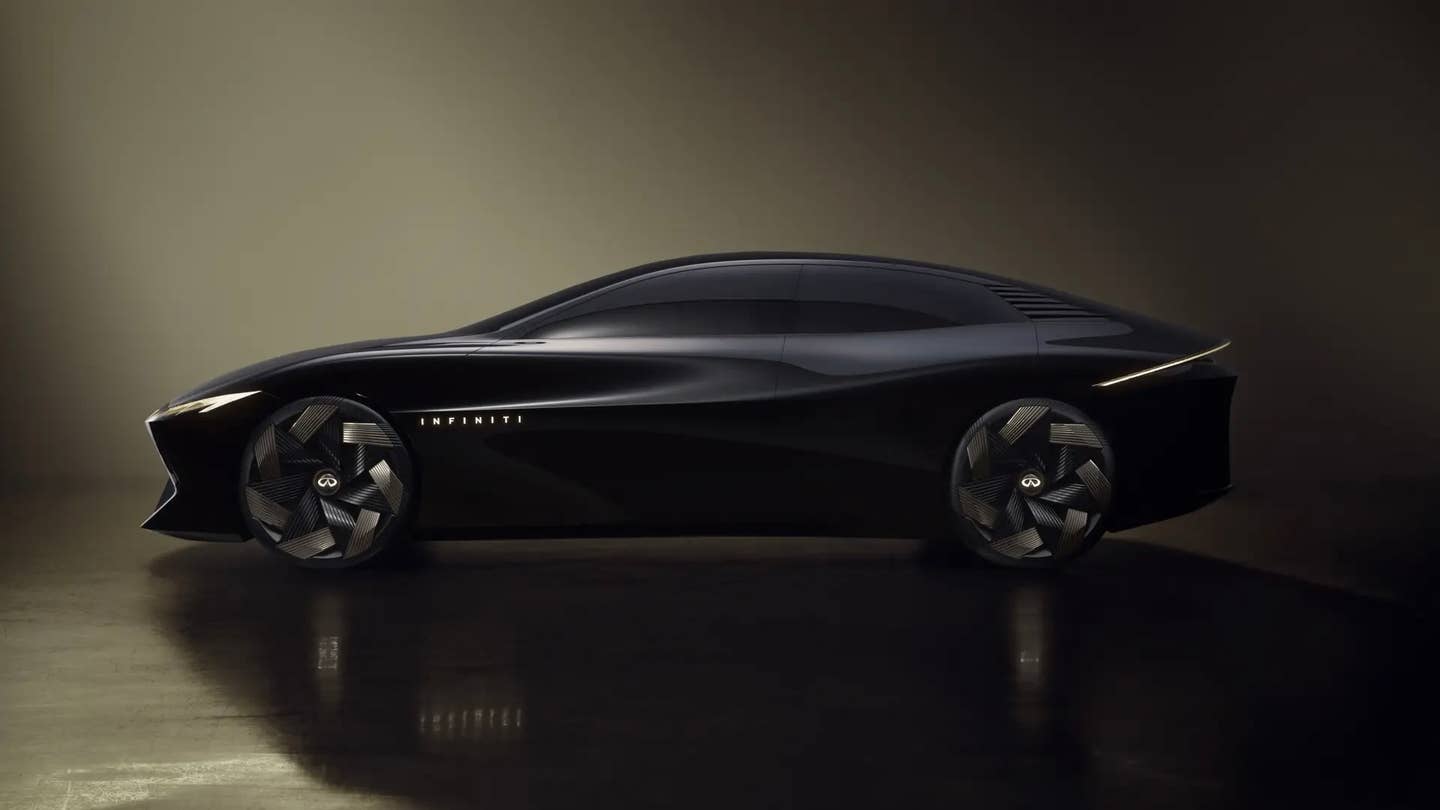Infiniti captured our hearts in the ’90s and 2000s, but can it do so again now that so much has changed?

It’s a little weird to think about a relatively young automaker like Infiniti in terms of its history. But with recent offerings failing to captivate and nostalgia for ‘90s Japanese cars at an all-time high, it’s easy to see why the luxury brand would look backward for inspiration. After all, its first car—the high-tech Q45 sport sedan—turns 35 next year, and it referenced that car and the immensely successful FX crossover in its intro spiel for the new Vision Qe, an electric fastback sedan concept that previews the brand’s first EV. I caught up with Infiniti’s senior design director Taisuke Nakamura at the Qe’s unveiling ahead of the Japan Mobility Show to get his thoughts on Infiniti’s electric future, through the lens of its present and past.
The Q45 went on sale in 1989 as a 1990 model alongside the Lexus LS400 and second-generation Acura Legend; three unprestigious companies mounting Japan’s first serious challenge to Mercedes and BMW’s full-size sedans. It was praised for its dynamics, with a complex active-suspension system and optional four-wheel steering keeping its size in check. While the Q45’s grille-less “belt buckle” front end treatment was controversial at the time, it looks downright classy and understated today. Despite never selling in the numbers of its rivals, its engineering sophistication and sleek looks earned mentions in rap lyrics and a sort of cult following.
Fifteen years later, Infiniti had a more undeniable hit on its hands: The FX crossover. The FX invented the whole coupe-SUV thing before BMW’s X6 ever existed, and the style was so sharp it commanded dealer markups when it launched in 2003. It was the first SUV that outwardly prioritized looks and performance over practicality, and Nakamura considers it the defining icon for the brand. But that was two decades ago. The luxury car game is changing again, this time to EVs. Infiniti is a latecomer, and it knows it can’t just trot out a tarted-up Nissan Ariya and expect to succeed.
Nakamura described the Vision Qe concept as one that was “highly developed with the production [car.]” So while the Vision Qe’s show-car form won’t reach dealers, Nakamura says Infiniti is “committed to an electric sports sedan in the fastback style.” Given the overwhelming popularity of crossovers and Infiniti’s more recent success with the FX, I asked him why the team chose a sedan to launch the brand’s EVs. As he explains it, it came down to driving dynamics and staying true to Infiniti’s values. “One of our DNA is to deliver fun-to-drive [cars]. We have a long history about the sport sedan: G coupe, G series … I think that was one of the main reasons why we actually went to [a] sport sedan rather than the SUV.” the Qe’s designer said. He was quick to point out that an EV SUV will follow the fastback to market.
Nakamura is no stranger to retro-forward design, having penned the IDX Nismo coupe back in 2013, but don’t expect throwback designs from him at Infiniti. “Infiniti has a lot of iconic cars in its past; as I mentioned in the presentation, the Q45 is the first one. But we’re always trying to create another iconic car, [because] Infiniti’s history is not that long. So we always want to be the challenger,” he explained. He admits that Infiniti may not win any awards for brand recognition, saying the Vision Qe’s design targets “people who are kind of independent about [their] choice of car.”
To remain relevant in the electric age, Infiniti needs the production version of the Vision Qe to be another Q45—or better yet, another FX. Whether or not it can pull it off remains to be seen, but from the looks of the Vision Qe concept, it’s finally taking a real shot again.
Infiniti Vision Qe, QX80, QX65 crossover coupe and SUV. Infiniti


